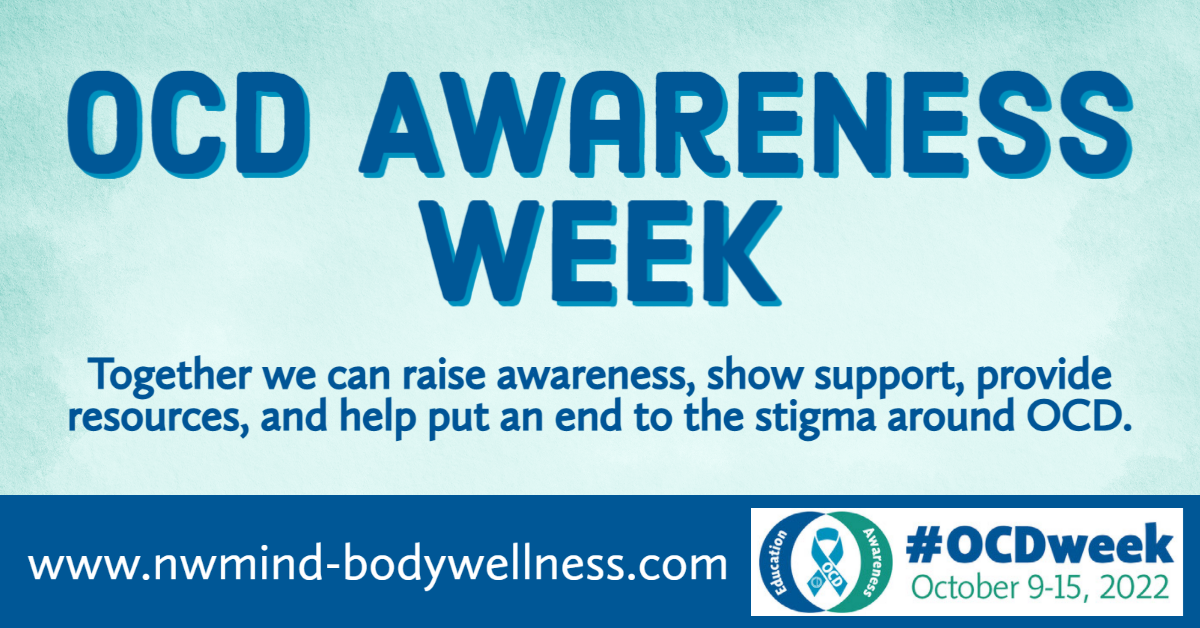OCD Awareness Week
OCD Awareness week is recognized this year from October 9th to 15th. The week aims to spread awareness and education, provide hope, and put an end to stigmas about OCD (Obsessive-Compulsive Disorder). The International OCD Foundation has claimed the theme of this year’s awareness week to be “the road to reclaiming your life.”
Obsessive-compulsive disorder (OCD) is a often long-term disorder in which an individual experiences uncontrollable, reoccurring thoughts (obsessions), and behaviors (compulsions) that they feel the urge to repeat over and over.
Based on data collected by Harvard Medical School and their National Comorbidity Survey Replication (NCS-R), the lifetime prevalence of OCD among U.S. adults was 2.3%.
In order to provide help for those struggling with OCD, it is important to understand what the disorder is. The following provides information on the symptoms, causes, and treatment of OCD.
SIGNS AND SYMPTOMS
Obsessive-compulsive disorder causes obsessive thoughts and compulsive behaviors that interfere with daily life and typically last for at least an hour each day.
Obsessions are repeated thoughts, impulses, or mental images that can cause anxiety. Common obsessions include:
- Doubts about having done something right, like turning off the stove
- Desire to have things be symmetrical or in a specific order
- Fear of germs or contamination
- Thoughts about harming or having harmed someone
- Disturbing thoughts or sexual images
- Fear of losing control of one’s actions
Compulsions are repetitive behaviors that a person with OCD feels driven to do in response to an obsessive thought. Common compulsions include:
- Repeatedly checking things such as appliances, locks, or switches
- Putting things in a particular and precise order
- Constantly seeking approval or reassurance
- Excessive cleaning and/or handwashing due to fear of germs
- Compulsive counting
Causes and Risk Factors
Although the exact causes of OCD are unknown, health professionals have determined various risk factors for the disorder. These risk factors include, but are not limited to:
- Genetics are often looked at as a risk factor for OCD. Many studies have shown that people with first-degree relatives (such as a parent, sibling, or child) who have OCD are at a higher risk for developing OCD themselves.
- Brain structure has been found to have links to OCD, although the connection is not yet entirely clear and research is still underway. Imaging studies have shown differences in the frontal cortex and subcortical structures of the brain in patients with OCD.
- Environment, such as childhood trauma, has been found as a risk factor for OCD by some studies. However, further research is needed to better understand the relationship between one’s environment and OCD.
Treatment
There are many forms of treatment for obsessive-compulsive disorder, and some types may work better for different individuals. Many treatment options are often used together for the best results. Types of treatment include, but are not limited to:
- Psychotherapy can be beneficial to both children and adults with OCD. There are various types of psychotherapy used to treat OCD including:
- Cognitive behavioral therapy (CBT) can help individuals better understand and learn to control their obsessions and compulsions
- A type of CBT called exposure response and therapy helps teach individuals how to respond to the anxiety associated with obsessions and not respond with the compulsion
- Medication may be used in the treatment of OCD. Various different medications may be prescribed, including:
- SSRIs, a type of antidepressant, can be helpful for many in controlling obsessions and compulsions
Finding TREATMENT AND RESOURCES
- To learn more about obsessive-compulsive disorder, we recommend contacting your healthcare provider.
- To read more about OCD and OCD Awareness Week, the following resources are suggested:
Return to home page: https://nwmind-bodywellness.com/
Read more articles: https://nwmind-bodywellness.com/articles/
